This morning I took a drive to the Matthaei Botanical Gardens for some shed antler hunting and general scavenging. I wasn't let down!
One of the first finds was an Eastern Cottontail. There wasn't much left to the rabbit's body — it had been preyed upon, likely by a coyote or a fox. All that remained was fur and its back feet, one of which I photographed, in-hand:
It's an interesting play on the concept of a "lucky rabbit's foot" — which, as it turns out, is a custom that has been around for thousands of years! Obviously, this cottontail wasn't so lucky, but the predator that fed upon it was.
The next find wasn't a dead animal — it was an antler!
Finding shed antlers is always exciting. I was able to spot this one from around fifty feet away, as it was an arc of gleaming white in the dull, dead grass. It's got four tines, and is of average size. It's also freshly shed — and there are no rodent gnaw marks! This find, however, was dwarfed by my next discovery.
As I looked for this antler's mate, which I never found, I noticed a turkey vulture circling overhead. I started off in that direction, and was soon met by an incredible sight:
This White-tailed Deer buck was a relatively recent death — likely no more than a few weeks old. His vitals had been ripped open by coyotes; his stomach contents were bared to the sky and his pink muscles glistened. The buck's eyes were mostly intact, but for whatever reason, his nose and ears had been bitten off by coyotes. One leg was missing entirely. His antlers, though, were pretty amazing.
Three tines on the right antler were broken, likely during the rut. The same antler also had some neat little kickers coming out near the base, as well as an unusually wide main beam. The tines on the left antler, including the eye guard, were quite long.
Back in 2011 when I found March Buck, I had needed assistance in removing his head — this time, I was more than capable of doing it myself! As I cut it off, the turkey vulture circled overhead, patiently waiting for me to leave. This buck's head will be returning with me to Marquette; it will be interesting to see how old this deer was. I'm unsure of his cause of death — it's possible he was struck by a car, then limped into the field to die.
My adventure didn't end there, however. The next find was a small Striped Skunk, found dead in the same field. It looked to be only a day or so dead. It's very possible that the skunk died of rabies; I left the body alone and continued on my way.
After dropping off the (very heavy) buck head and shed antler in my car, I continued to explore. Deciding it might be interesting to see if March Buck's skeleton was still there, I headed in that direction. I didn't find any of his bones — but I did find the carcass of a doe. She was laying in almost the exact same place that I found March Buck: beneath the lone cedar tree.
The doe's state of decay was nearly identical to that of March Buck. But even stranger — and this was downright uncanny — was that she, too, had something wrapped around her foot. Unlike March Buck's piece of plastic tubing, this doe had a guy line strangling her hind leg, just above the dew hooves. It had tightened all the way down to the bone — which was broken.
I have little doubt that this impairment caused her death. It was a disturbing, grisly sight.
At that point, I started the long trek back to the parking lot. Along the way, I spotted the body of a Virginia Opossum beneath a tree:
It was a relatively small animal, and looked to have been dead for at least a week or so. In typical opossum fashion, the lips had curled away from the teeth, making for a gruesome, deathly grimace.
My last find of the day was the lone foreleg of a deer.


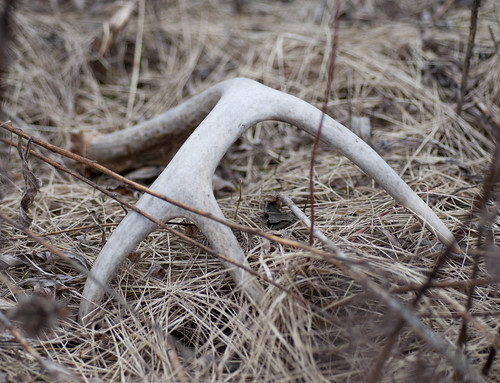

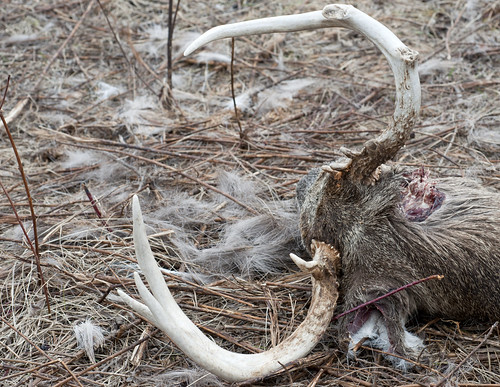
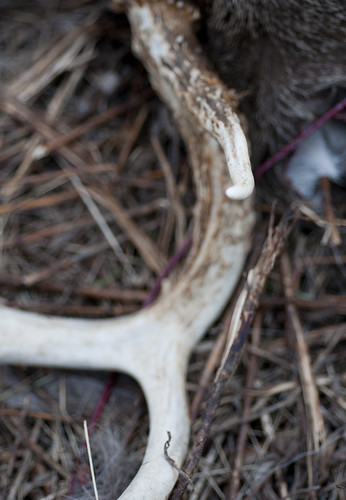
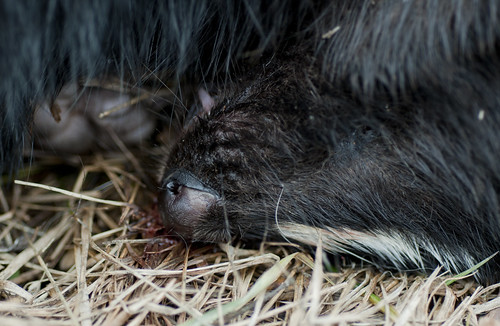
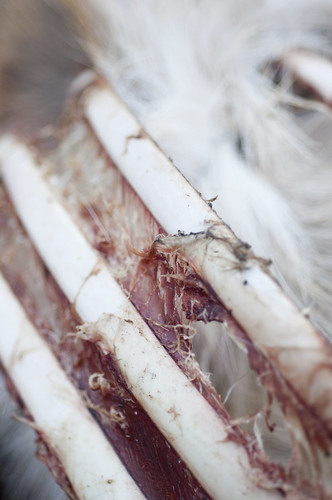

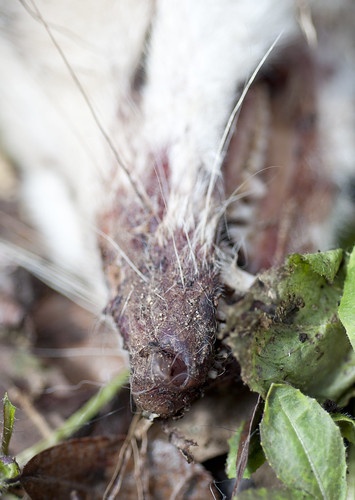
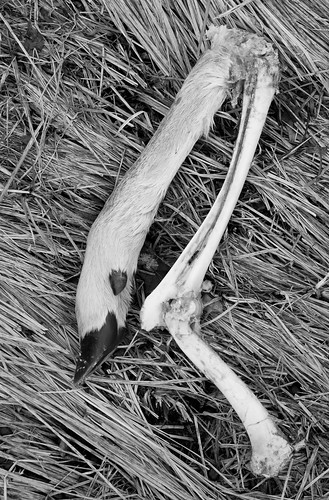



Looks like the ecosystem at the gardens is alive and well. That property seems to support an abundance of species.
ReplyDeleteWonderful photos, of course.